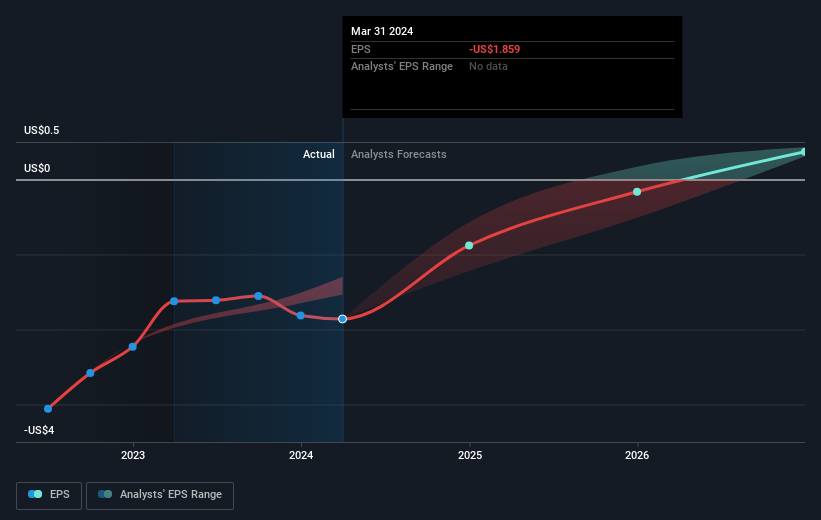Invivyd, Inc. (NASDAQ:IVVD) Is Expected To Breakeven In The Near Future
We feel now is a pretty good time to analyse Invivyd, Inc.'s (NASDAQ:IVVD) business as it appears the company may be on the cusp of a considerable accomplishment. Invivyd, Inc., a commercial-stage biopharmaceutical company, focuses on the discovery, development, and commercialization of antibody-based solutions for infectious diseases in the United States. With the latest financial year loss of US$199m and a trailing-twelve-month loss of US$207m, the US$144m market-cap company amplified its loss by moving further away from its breakeven target. As path to profitability is the topic on Invivyd's investors mind, we've decided to gauge market sentiment. Below we will provide a high-level summary of the industry analysts’ expectations for the company.
See our latest analysis for Invivyd
According to the 4 industry analysts covering Invivyd, the consensus is that breakeven is near. They expect the company to post a final loss in 2025, before turning a profit of US$58m in 2026. So, the company is predicted to breakeven approximately 2 years from now. In order to meet this breakeven date, we calculated the rate at which the company must grow year-on-year. It turns out an average annual growth rate of 70% is expected, which is extremely buoyant. Should the business grow at a slower rate, it will become profitable at a later date than expected.
Underlying developments driving Invivyd's growth isn’t the focus of this broad overview, though, keep in mind that by and large biotechs, depending on the stage of product development, have irregular periods of cash flow. So, a high growth rate is not out of the ordinary, particularly when a company is in a period of investment.
One thing we’d like to point out is that Invivyd has no debt on its balance sheet, which is rare for a loss-making biotech, which typically has high debt relative to its equity. The company currently operates purely off its shareholder funding and has no debt obligation, reducing concerns around repayments and making it a less risky investment.
Next Steps:
There are too many aspects of Invivyd to cover in one brief article, but the key fundamentals for the company can all be found in one place – Invivyd's company page on Simply Wall St. We've also put together a list of pertinent factors you should look at:
Valuation: What is Invivyd worth today? Has the future growth potential already been factored into the price? The intrinsic value infographic in our free research report helps visualize whether Invivyd is currently mispriced by the market.
Management Team: An experienced management team on the helm increases our confidence in the business – take a look at who sits on Invivyd’s board and the CEO’s background.
Other High-Performing Stocks: Are there other stocks that provide better prospects with proven track records? Explore our free list of these great stocks here.
Have feedback on this article? Concerned about the content? Get in touch with us directly. Alternatively, email editorial-team (at) simplywallst.com.
This article by Simply Wall St is general in nature. We provide commentary based on historical data and analyst forecasts only using an unbiased methodology and our articles are not intended to be financial advice. It does not constitute a recommendation to buy or sell any stock, and does not take account of your objectives, or your financial situation. We aim to bring you long-term focused analysis driven by fundamental data. Note that our analysis may not factor in the latest price-sensitive company announcements or qualitative material. Simply Wall St has no position in any stocks mentioned.
Have feedback on this article? Concerned about the content? Get in touch with us directly. Alternatively, email editorial-team@simplywallst.com

 Yahoo Finance
Yahoo Finance 
